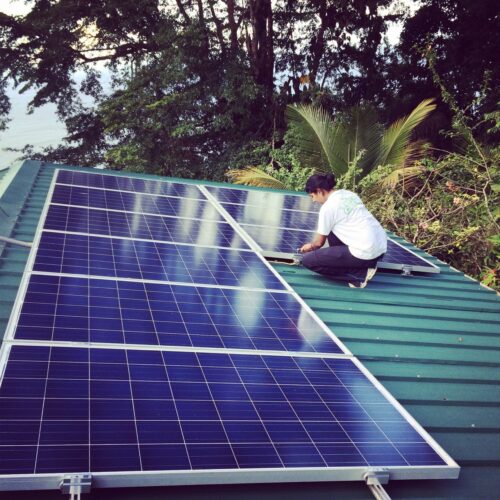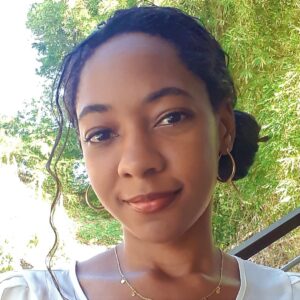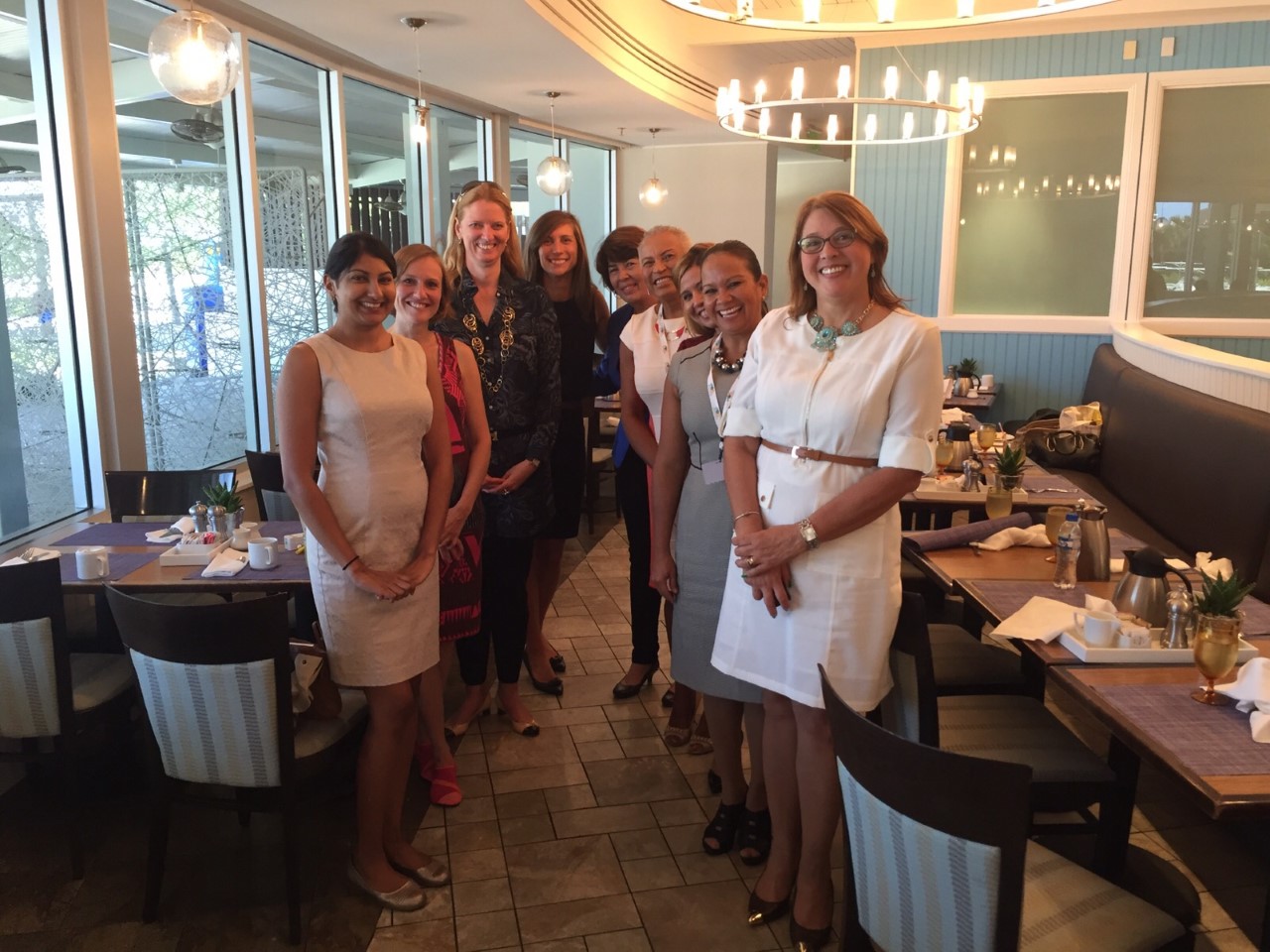
Siana and Zsaria: Speeding the Caribbean’s Energy Transition
With shared roots in Trinidad and Tobago, two young women are championing collaborative approaches to accelerate a shift to solar, batteries, and enabling environments for clean energy.
While in their respective universities, an impactful career in clean energy and climate-related issues seemed out of reach for Zsaria Diaz and Siana Teelucksingh. Both grew up in Trinidad and Tobago, the Caribbean’s southern-most island country. As one of the region’s top producers of oil and gas, fossil fuel jobs and businesses dominate the economy.
Yet they both grew increasingly aware of the high prices Caribbean islands faced for imported fossil fuels. Expensive energy sources not only hamper the region’s prosperity, but their carbon emissions are contributing to climate change — a particular threat to island nations.
The motivation to make a positive difference led them to RMI. Today, both work on the institute’s Islands Energy Program where they help Caribbean nations transition to clean energy. They are currently working on solar-plus-storage microgrid projects that will reduce energy costs and improve the resilience of islands’ power grids to storms, blackouts, and other disruptions.
Resilience for Island Nations
Diaz initially studied chemical engineering, and when it was difficult to find a job in Trinidad and Tobago, she took an online course on organic solar cells. Her new interest led her to earn a master’s degree in renewable energy technology. She was excited to join RMI as an associate to help others living on islands have access to affordable energy. “In some rural areas, it’s not easy to connect people to the grid,” Diaz says. “They can have so many more opportunities when they have access to renewable energy.”
Teelucksingh started her career in oil and gas, working as a geoscientist. But after a few years, she decided to pursue a master’s degree in sustainable energy at Imperial College London. Upon returning to Trinidad, she dove straight into renewables, developing a feasibility study for a solar panel manufacturing facility in Trinidad and Tobago, and managing the installations of off-grid solar and storage systems for homes in the Caribbean.
As a part of her efforts, Teelucksingh had a passion for increasing awareness and understanding of renewable energy at a national level. She collaborated with IAMovement, a local nonprofit organization, to produce the “Rethinking Energy” video series to help the general public better understand the energy sector, what goes into their electricity bills, and the barriers and opportunities for renewable energy.
As a manager for RMI’s Islands Energy Program, Teelucksingh now guides utilities, governments, and regulators to untangle the complexity inherent in designing customer-owned rooftop solar programs and ownership models for utility-scale projects, as well as building battery energy storage system models to optimize microgrids. In the photo at the top of this page, Teelucksingh is tightening the final screws on a solar project in Trinidad, after managing the entire design, procurement, and installation process.
One of the projects that Diaz and Teelucksingh are working on is a 2.5 megawatt (MW) solar plus 8.5 MW storage microgrid in Paraquita Bay in the British Virgin Islands. RMI, along with the islands’ electric utility — British Virgin Islands Electricity Corporation (BVIEC) — and the Caribbean Development Bank began exploring the feasibility and benefits of a microgrid after Hurricanes Irma and Maria devastated the islands in 2017. The two category 5 hurricanes caused $US 3.6 billion in damage and left some residents without electricity for six months.


The microgrid will connect with the national grid and power the Paraquita Bay Community, including a community college that is a designated hurricane shelter, a water pumping station, and a water treatment plant. If there is a grid disruption, whether due to a hurricane or an electrical fault, the microgrid can decouple from the national grid and continue to provide power to the Paraquita Bay Community and the facilities that provide essential services.
Designing this microgrid presented the opportunity to develop an energy storage (battery) optimization study that examines the value streams linked to such a project, quantifying primary and secondary financial benefits that batteries can bring to small island grids. For example, spinning reserve support can help conventional generators perform at their optimal operating point, reducing fuel consumption and leading directly to lower bills to customers.
As more intermittent renewable sources are integrated into island grids, batteries can help smooth out the intermittency of renewable energy, keeping voltage levels steady even when solar or wind power output fluctuates. If there is an outage on the wider grid due to an event at the main power plant or a downed distribution or transmission line, a battery can also provide emergency backup services. This analysis can be used as a blueprint for battery optimization studies for other island nations.
“Renewable energy microgrids can increase the resilience of many islands in the territory by providing a decentralized source of power to critical facilities, which can then provide the community with essential services during times when they are especially needed, such as after hurricanes or other disruptive events,” said Symorne Penn, deputy general manager of BVIEC.
Alignment Is Key
Both Diaz and Teelucksingh say there is keen interest in renewable energy in the region, but one of the key issues is creating alignment among the government, regulators, utilities, and other stakeholders. “The stakeholders involved don’t have to agree perfectly on everything but need to align on key aspects to move things forward,” says Diaz. “If they don’t see eye to eye, projects can come to a standstill. That’s where I see RMI’s support and technical expertise is most valuable. We are able to understand the needs of different stakeholders and align critical interests. We all have to work together to make this transition happen.”
Teelucksingh has seen this alignment happen in various Caribbean Island Nations over her career. “The key to a successful energy transition is based on stakeholders sharing perspectives, understanding the constraints and incentives of each agency, and unlocking the complexity of the energy sector in a collaborative way,” she says. “At the end of the day, the energy sector is the foundation of a nation’s economy. A strong foundation leads to a prosperous future.”
In the British Virgin Islands, as in many Caribbean islands, most stakeholders recognize that adoption of renewable energy sources is in the nation’s best interest as the benefits are numerous and far outweigh the drawbacks. This is a powerful boost to future project development as this means that the conversation gets off the starting blocks of “if” renewable energy should be pursued in the first place and moves quickly into the discussion phase of “how best” it should be pursued. It is within this discussion phase that collaboration among various stakeholders can give rise to innovative methods and mechanisms that facilitate successful uptake of renewables in the island context.
Women Making Change
“It’s also important to get different perspectives, including from different genders,” says Diaz, stressing the importance of including women in the energy transition. Women around the world are disproportionately impacted by climate change but make up only 32 percent of the renewable energy industry globally. That’s why, in 2016, Teelucksingh helped found the Women in Renewable Energy (WIRE) Network when she was at the Clinton Climate Initiative. WIRE, now run by RMI, is a professional development group for women working in energy in island nations and it provides mentorship, peer-to-peer learning, and capacity development.

We can’t leave out half the population when it comes to tackling climate change and increasing resilience. As these two women from Trinidad and Tobago have shown, women have a lot to offer. Through their hard work and effective collaboration, Diaz and Teelucksingh are showcasing how prioritizing local needs and aligning stakeholders is helping island nations combat high energy prices, increase their resilience to storms, and foster energy independence — moving toward a cleaner, healthier future.